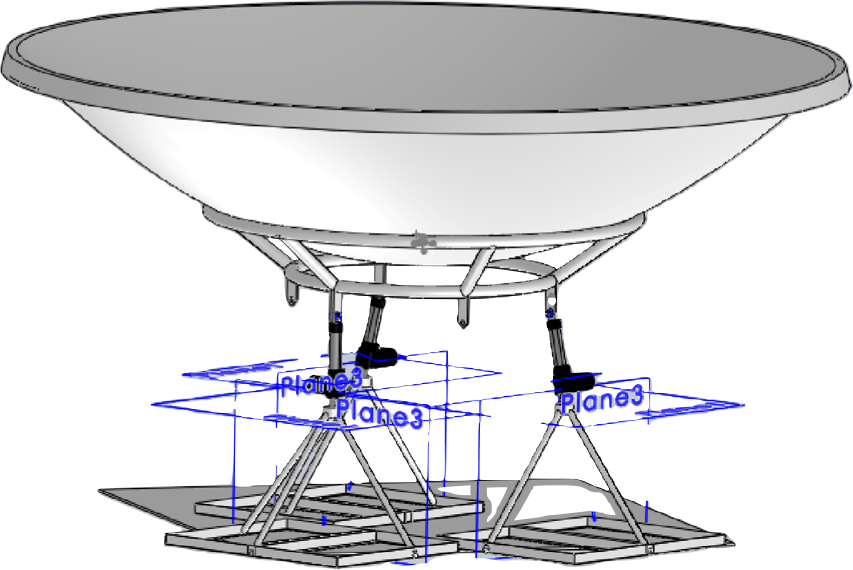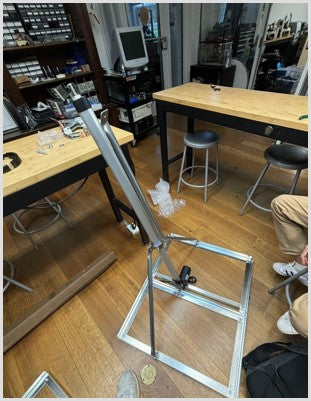
3RPS Parallel Manipulator in Celestial Tracking Mode
A high-resolution render of the 3RPS parallel manipulator configured to track celestial objects with precise angular positioning.
This image showcases the theoretical design and structural composition of a 3RPS (three-revolute-prismatic-spherical) parallel manipulator configured for real-time celestial object tracking. This specialized kinematic setup utilizes a bowl-shaped receptor, supported by a meticulously designed frame that allows multi-axis alignment and movement. The manipulator's structure features strategically placed rotation and translation joints to optimize its range of motion for celestial scanning. The highlighted reference planes serve as calibration markers to ensure the manipulator can reorient with sub-degree accuracy to track objects across the celestial sphere dynamically. This design is particularly suited for applications requiring rapid repositioning in real-time, offering a powerful solution for precision-based astrophysical observations and regional sky scanning. Its robust framework not only minimizes vibration and external disturbances but also ensures optimal stability and alignment when following high-velocity celestial bodies.

Physical Prototype of Celestial Tracking Manipulator
Real-time assembly of the 3RPS parallel manipulator in a laboratory environment.
This image presents the assembly phase of a 3RPS parallel manipulator prototype, crafted to enable dynamic tracking of celestial objects. The aluminum frame structure provides a lightweight yet stable foundation, essential for the device’s precision movements under rapid angular adjustments. The vertical actuator rods, visible in this prototype, are essential for maintaining the manipulator's three degrees of freedom, allowing it to perform finely tuned rotational and translational movements in response to tracked celestial coordinates. Each actuator is aligned to support the central platform, enabling consistent orientation control relative to the base. This physical model serves as a foundational step towards achieving real-time tracking capabilities in an operational environment, providing insights into calibration needs, structural integrity under operational loads, and actuator synchronization essential for astrophysical tracking tasks. The prototype’s modularity allows for adaptability across various observational setups, enabling researchers to fine-tune its parameters for precise alignment with celestial trajectories.